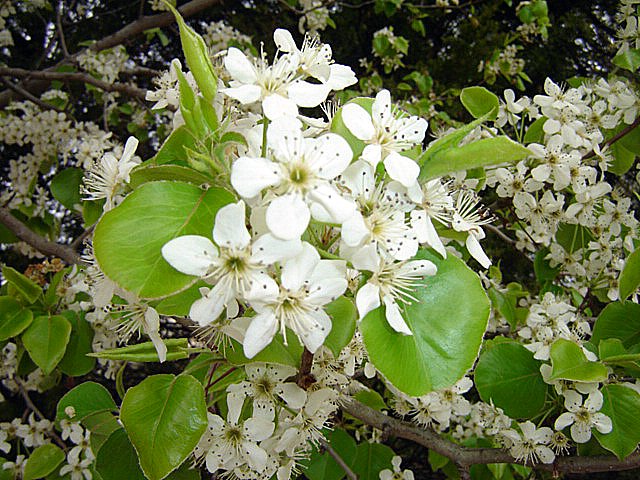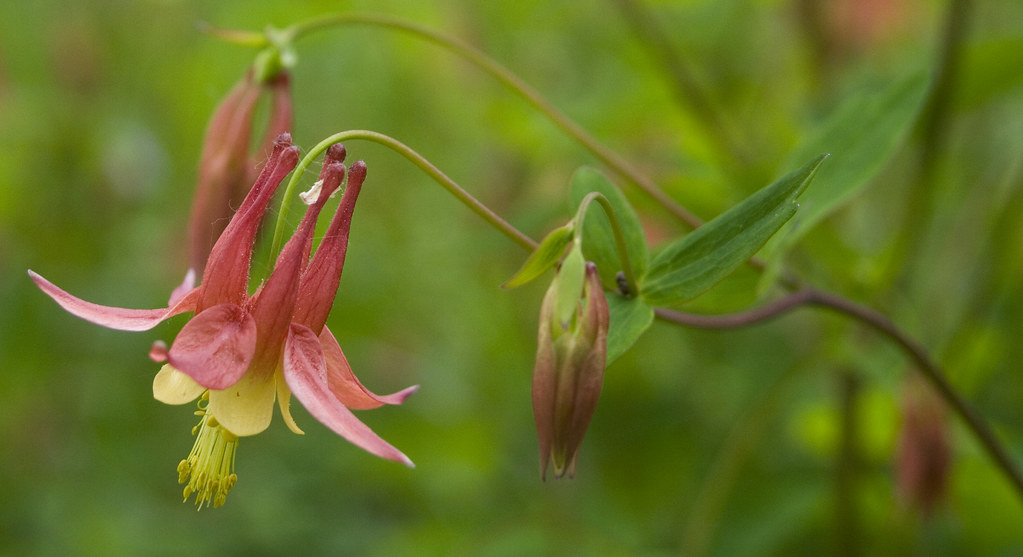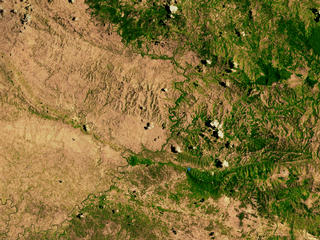 My plan for now is to spend the first year observing the plants that grow there now: to see their types, habits, and varieties; to watch the patterns of sun and water on the property; to mull future garden plans. There are a few patches of English ivy and wintercreeper to work on weeding out, and most of the trees appear to be weedy Ailanthus growing along the fenceline that I'll want to replace, but I hope for the first year to be mostly observation. With a small bit of land, it'll be worth the time to find the sunny patches as the sun shifts in the sky, to find the wet and dry patches, to slowly stress the weeds into oblivion, to plan a layout, and to drag out and savor the slow process of getting things the way I'd like them to be.
My plan for now is to spend the first year observing the plants that grow there now: to see their types, habits, and varieties; to watch the patterns of sun and water on the property; to mull future garden plans. There are a few patches of English ivy and wintercreeper to work on weeding out, and most of the trees appear to be weedy Ailanthus growing along the fenceline that I'll want to replace, but I hope for the first year to be mostly observation. With a small bit of land, it'll be worth the time to find the sunny patches as the sun shifts in the sky, to find the wet and dry patches, to slowly stress the weeds into oblivion, to plan a layout, and to drag out and savor the slow process of getting things the way I'd like them to be. For a long time, I have been an avid gardener without any garden. Living in the U.S. and Japan and traveling in China and Europe, I've seen some really excellent and inspiring gardens. At present, I think there are three main traits I'll want to encourage in my yard:
Nativeness
The single largest threat to the environment of the continental U.S. is not global warming, or overhunting, but invasive species. Following more than a century of overhunting, clearcutting, habitat destruction, and pollution, one of the great environmental disasters of the 20th century was the downfall of the American chestnut. Two generations ago, the exotic chestnut blight wiped out four billion chestnut trees, the most commercially, economically, and ecologically valuable tree of the climax forest in the East. A generation ago, Dutch elm disease wiped out beloved elm trees across the country. And now that the emerald ash borer has entered Kentucky, ash trees will likely become virtually extinct in this part of the world for centuries or millenia to come.
 Invasive species are bad for our local environment, and their spread is often aided and abetted by home landscaping. Some of Kentucky's least wanted plants are introduced from landscaping: burning bush, Japanese honeysuckle, English ivy, and the ugly, obnoxious, highly aggressive wintercreeper. Most of these plants are really pretty ugly, to boot. Louisville's otherwise very cool Riverwalk is absolutely choked with exotic honeysuckle and multiflora rose. There's more information at the Kentucky Native Plant Society or native gardening at USFS
Invasive species are bad for our local environment, and their spread is often aided and abetted by home landscaping. Some of Kentucky's least wanted plants are introduced from landscaping: burning bush, Japanese honeysuckle, English ivy, and the ugly, obnoxious, highly aggressive wintercreeper. Most of these plants are really pretty ugly, to boot. Louisville's otherwise very cool Riverwalk is absolutely choked with exotic honeysuckle and multiflora rose. There's more information at the Kentucky Native Plant Society or native gardening at USFS Whenever I go out for a hike or bike ride in the woods or a park, I'll see a patch of English ivy or wintercreeper or honeysuckle beginning the process of taking over a patch of otherwise bucolic woods. It's depressing. And when I come back into the city and see those same plants infesting yards and gardens, it's still depressing. I'd rather, as much as is possible, stick to the plants and flowers common in the area of the Falls of the Ohio, the Ohio River valley, and the Eastern woodlands west of Appalachia. This is hardly a limitation: the Eastern forest of the United States is one of the most botanically diverse temperate ecosystems in the world.
Michael Pollan penned a diatribe Against Nativism 15 years ago, which raises some valid points, but I think this remains an interesting approach to gardening, in general.
Usefulness
If you're going to put in the work to grow a plant, there should be a purpose for the labor. Plants worth cultivating should serve us for food, for spices, for tea, or for useful materials. A tomato plant or two, and a window box full of mint are good; sunflowers and squashes have been grown here for thousands of years, and there are interesting opportunities to experiment with cultivating native plants for food, such as sunchokes or ramps (Allium tricoccum). American bamboo is a good structural material for crafts. Horsetails can be scouring brushes. Bee balm and yarrow make nice tea.
I've long been intrigued by the idea of Kerala home gardens: that every household would have a few trees that supply food to enrich the family's diet. When I was a kid in Oklahoma, we had a peach tree and an almond tree, which provided a fantastic wealth of fruit and nuts every year. We had more peach pies than we could eat. It was great.
 This idea has been expanded to forest gardening and permaculture, which seems to be something of a treehugger buzzword. But layering perennial food-producing to mimic the ecologial structure of a forest could be a way to get a wealth of food with less work. I am a big believer in perennials, especially those that can fend for themselves. And the plants typical of our local forests can fit such a system well: a canopy of hickory, pecan, oak, black cherry, or persimmon (but sadly no chestnuts), beside which can grow pawpaws, sand plums, American plums, hazelnuts, or serviceberries. Below, in the understory, can grow native ferns for fiddleheads, mosses, and perhaps wild ginger. Sounds workable, but needs more research.
This idea has been expanded to forest gardening and permaculture, which seems to be something of a treehugger buzzword. But layering perennial food-producing to mimic the ecologial structure of a forest could be a way to get a wealth of food with less work. I am a big believer in perennials, especially those that can fend for themselves. And the plants typical of our local forests can fit such a system well: a canopy of hickory, pecan, oak, black cherry, or persimmon (but sadly no chestnuts), beside which can grow pawpaws, sand plums, American plums, hazelnuts, or serviceberries. Below, in the understory, can grow native ferns for fiddleheads, mosses, and perhaps wild ginger. Sounds workable, but needs more research.The things you should grow at home, given the work involved, are things that you want an overwhelmingly bounty of (you can never have too much homegrown tomatoes), or unusual things that are hard to buy in the store.
Aesthetics
 And so my priorities are opposite of most. There are some flowers that I enjoy absent practical uses: coneflowers, asters, blazing star, wild roses, &c. And I have come to think "usefulness" should include "attracts hummingbirds and butterflies" (clearly, very utilitarian creatures), so: butterfly weed, meadow lily, trumpet honeysuckle, red columbine. Trumpet creeper is the best hummingbird flower, but very aggressive; I'd be hesitant to plant it, but would be satisfied if it's already there.
And so my priorities are opposite of most. There are some flowers that I enjoy absent practical uses: coneflowers, asters, blazing star, wild roses, &c. And I have come to think "usefulness" should include "attracts hummingbirds and butterflies" (clearly, very utilitarian creatures), so: butterfly weed, meadow lily, trumpet honeysuckle, red columbine. Trumpet creeper is the best hummingbird flower, but very aggressive; I'd be hesitant to plant it, but would be satisfied if it's already there.Photos: Top—Helianthus tuberosusSecond—Lonicera sempervirensThird—Prunus americanaBottom—Aquilegia canadensis,





